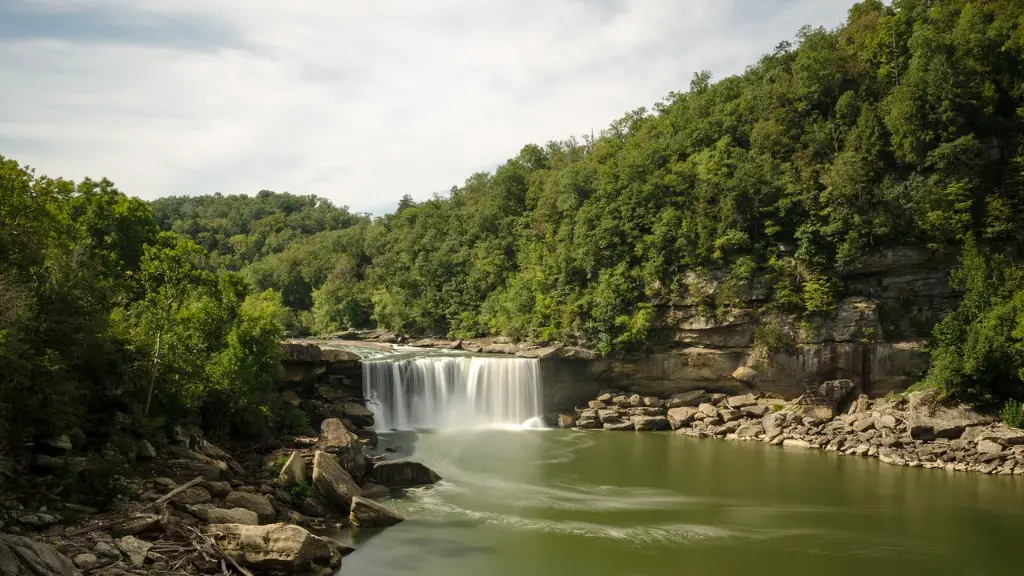Geographical features
The Ohio River is a 981 mile-long river that is shared by Ohio and five other states: Kentucky, Indiana, West Virginia, Illinois, and Pennsylvania. It’s the largest tributary, in volume of water and length, of the Mississippi River, which is the third largest river in America by length and volume. The Ohio River has much significance to the American people, from its trading and transportation history to its past as a site for labor and industry. As a shallow, slow moving river, it is often considered to be the boundary between the western and eastern United States.
The Ohio River typically flows south, with some notable exceptions. From its source in Pittsburgh, Pennsylvania, it runs southeastward and passes through the states of Ohio, West Virginia, and Kentucky before joining the Mississippi River at the tip of Illinois. The Ohio River empties into the Mississippi River, the longest river in the United States. This is a point of confusion for many people, because the Ohio River runs into the Mississippi River, not the other way around.
Industrial activities
As a large waterway, the Ohio River has been used for many centuries for a variety of activities and purposes. Long before Europeans arrived, Native Americans used the river for both trade and transportation. It functioned, too, as an important commercial highway connecting western settlements and cities to the east coast. The 19th century brought increased commercial activity to the Ohio River, which led to the construction of locks and dams. This significantly reduced the water current, allowing goods and materials to be more easily transported along the river.
Along with these industrial activities, the Ohio River became an important site for labor and industry. Steel mills, factories, and coke works lined the banks, providing employment opportunities and greater economic development throughout the region. Large commercial ports also developed along the river, allowing goods and materials to be brought in and shipped out more easily.
Pollution
Pollution and runoff from these activities had a profound effect on the ecosystem of the Ohio River. Even today, the river continues to be polluted by a variety of sources. Runoff from agricultural operations, residential and industrial wastewater, and toxic chemicals from manufacturing plants all contribute to the poor water quality of the river. In addition, many native species of fish and plant life have been adversely affected by the pollution.
The U.S. EPA has taken steps to address the problem by implementing the Ohio River Basin Total Maximum Daily Load Program. This program requires states to develop plans to reduce the amount of pollutants that are entering the river. These efforts have been somewhat effective in reducing the levels of pollutants, but there is still much that needs to be done.
Protection and conservation
The Ohio River is an important source of recreation, water supply, and natural beauty. The states along the river are cognizant of the need to protect and conserve the river, as well as its fish and wildlife populations. In addition to the EPA’s efforts, state governments have taken action to reduce the amount of pollution entering the river.
For example, Kentucky, West Virginia and Ohio have established the Ohio River Valley Water Sanitation Commission, which consists of representatives from the states and local communities. This commission has implemented water quality standards and regulations to help maintain the ecological and recreational integrity of the river.
Along with protection and conservation, the states have also worked to increase navigation safety. The U.S. Army Corps of Engineers has constructed navigational locks and dams throughout the Ohio River, greatly reducing the water current. These navigational locks and dams make it possible for goods, materials, and people to move more safely and efficiently up and down the river. In addition, the Corps has also established many boat launching ramps, fishing docks, and other facilities along the banks of the river.
Economic benefits
The Ohio River has long been an important economic resource for the region. The commercial activities and industries along the river provide much-needed employment and income to the states. In addition, the river also serves as an important source of water supply and recreation. Boating, fishing, swimming, and other recreational activities draw visitors to the region, boosting tourism and economic growth.
Conclusion
The Ohio River is a valuable resource to the states that it runs through. With the help of the EPA and other organizations, the states are striving to protect and conserve the river and its surrounding ecosystems. In addition, navigational locks and dams make it possible for goods, materials, and people to move more efficiently up and down the river. Finally, the river also serves as an important economic resource, providing employment and income to the surrounding states.

